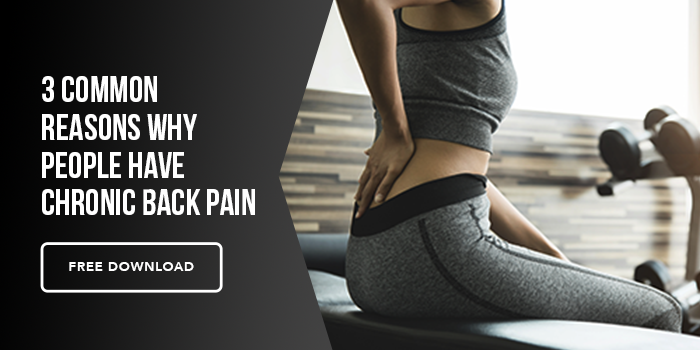Control Inflammation
From what we eat, to all the extra stimulus from lifting weights, our bodies are in a constant state of inflammation. We think, just because we aren’t currently working out we shouldn’t have any. Many things play a factor. The daily life of stress, sitting at your office hunched over all day, and many more can factor into chronic inflammation that can lead to back pain.
If we don’t address this, our body will respond. Weeks of improper form, not enough mobility work, and incorrect movement patterns ends up putting the stress that the hips are supposed to take on, and diverting it all to the back. This is not good. The lower back wasn’t designed to take on it’s own stress PLUS that of the hips (due to lack of range of motion). We need to be priming our bodies before our workouts, and doing corrective work throughout the week to keep the injuries at bay.
Common Weak Points - Abs, Hamstrings, Glutes
Abs: Being weak in these three areas, are the most likely reasons someone has back pain. That’s right. You don’t just get back pain, because it’s the back’s fault. Someone is not doing their share of the work. We’re sitting 90% of the day. Because of this, our hip flexors become overactive since they’re basically flexed the entire day. Then we sit in our car to drive home, and sit again, and watch tv. All of these things, done over time, overactivate the hip flexors (which start at the spine, and end on the femur), and pull you into that seated, bent over position. All of this is causing you to not use your abs, and thus they do not fire properly.
Hamstrings & Glutes: Somehow the glutes always get left behind. When is the last time you ever actually felt your butt fire to pick something heavy off the ground? If you can’t remember, AND you have low back pain, there’s your problem. There is a reason the deadlift is called a posterior chain exercise. The back muscles, glutes, and hamstrings make up that chain.
A proper firing glute takes on a lot of the load for lifting big things (squats, deadlifts, RDL’s). An active glute also counters an overactive hip flexor. Opening up the hips, and being able to fire the glutes allows you to achieve proper depth, while keeping the low back tight and stable (which is what it’s supposed to be doing). A 90/90 stretch, or hip crossover stretch is great for opening this up.
Let’s Alleviate and Activate
If you need help on the exact technique and form, be sure to check out the Mind Pump Youtube Page. For this article, I’ll just be listing some good exercises that are great, at addressing all the issues mentioned above.
1. Bird Dog - I like the bird dog because its low impact and teaches you how to properly keep a strong ab tension through a dynamic range of motion
Notes: The entire purpose of this exercise is learning to keep that core tight as your body is moving. It should NOT be turning left or right. You want to be thinking nice and tight the whole time. A common problem that happens is people want to rush the exercise for the sake of getting it done. You are re-learning movement patterns so a steady tempo is key here.
2. Hip Flexor Deactivator - I like this exercise for teaching people to engage their core and glutes, while also shutting off those overactive hip flexors. This should help us learn to keep our focus on a tight squeeze in just the abs. Over the long term, this should translate in us keeping that same engagement during big lifts.
Notes: You’ll know it’s working if your glutes and abs are on fire. Don’t let your butt come down at any point. If you need to rest then take your time. It’s about quality. This may be a struggle at first, but that is a good thing. It’s just highlighting how used to overcompensating with your low back you are.
3. Floor Bridge - This exercises is good for activating the hamstrings, glutes, and core. Most people tend to hyperextend their low back, for the sake of getting more range of motion.
Notes: Do not lose your contraction in the abs for the sake of getting that extra range of motion. In fact, you might find you get less range doing this compared to normal. That’s okay. It is because more focus is being placed on pushing that low back and keeping the core engaged, and glutes contracted vs hyperextending the low back using not abdominal strength.






